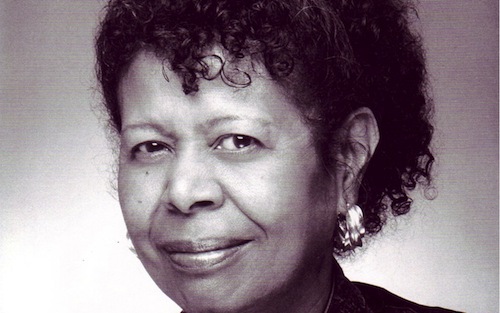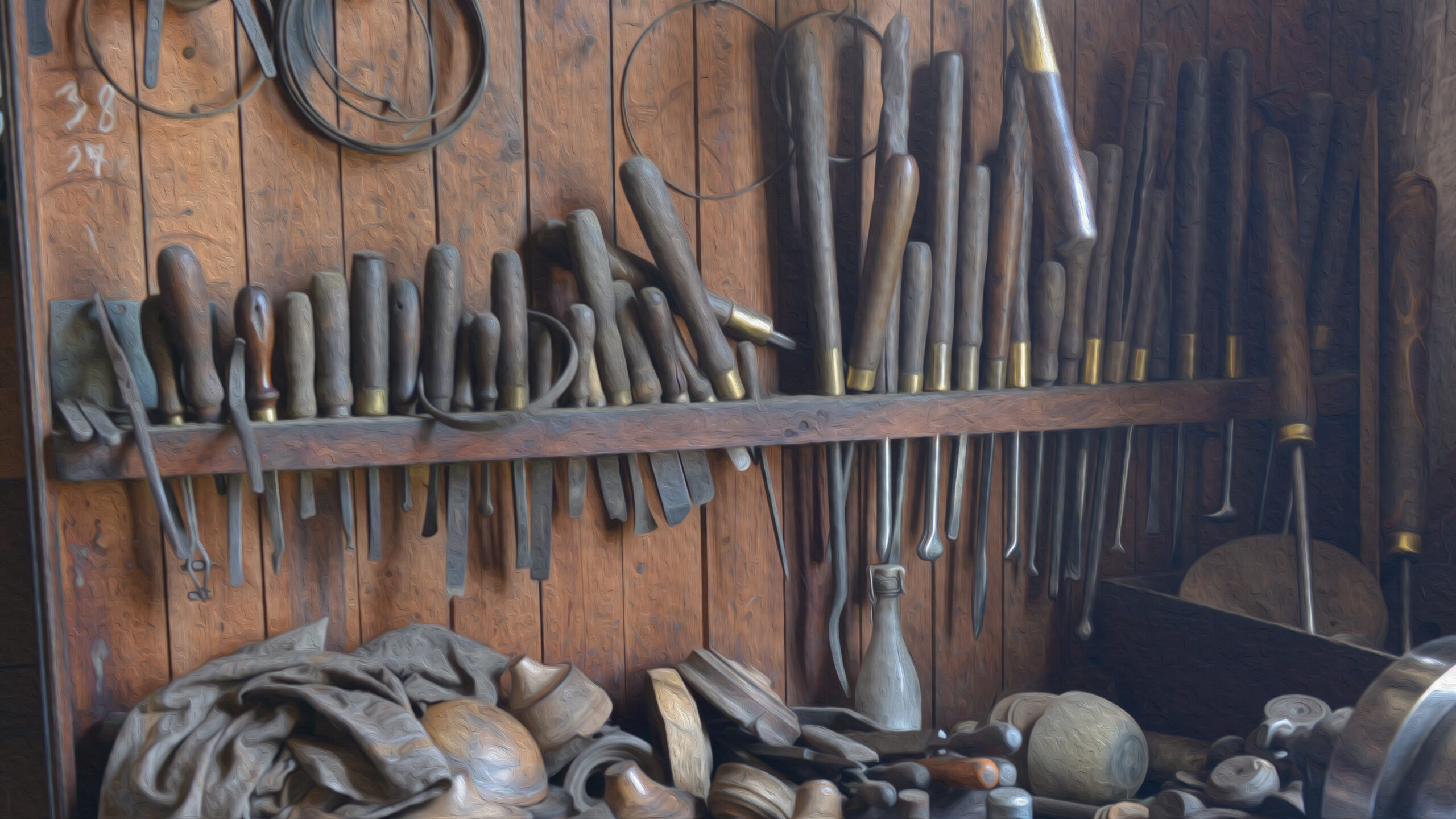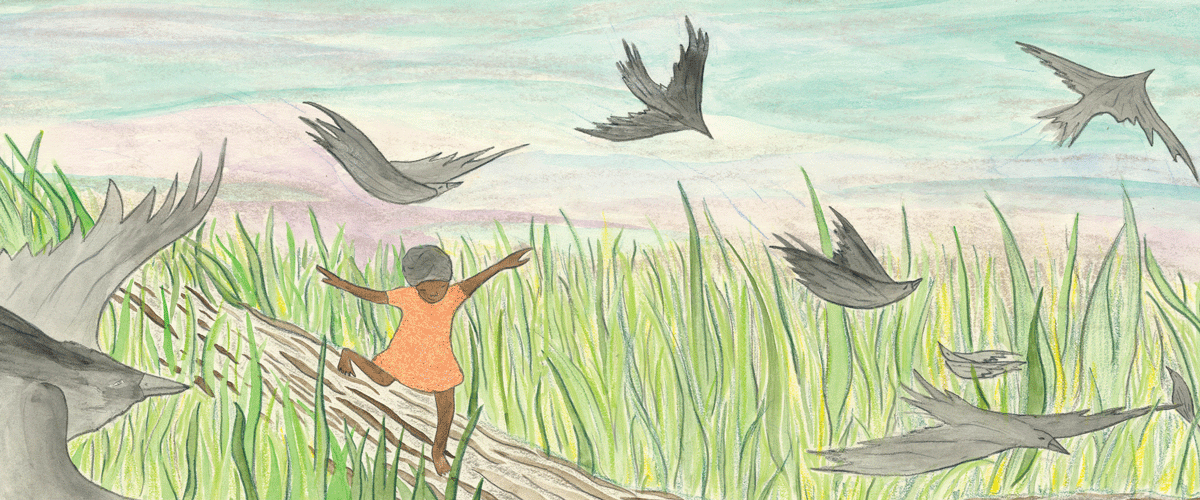FROM THE ARCHIVES: This article originally appeared in Teachers & Writers Magazine Volume 29, Issue 3.
Jayne Cortez wrote a wonderful poem that is challenging and useful for inspiring student writing:
Under the Edge of February
Under the edge of February
in hawk of a throat
hidden by ravines of sweet oil
by temples of switch blades
beautiful in its sound of fertility
beautiful in its turban of funeral crepe
beautiful in its camouflage of grief
in its solitude of bruises
in its arson of alert
Who will enter its beautiful calligraphy of blood
Its beautiful mask of fish net
mask of hubcaps mask of ice picks mask
of watermelon rinds mask of umbilical cords
changing into a mask of rubber bands
Who will enter this beautiful beautiful mask of
punctured bladders moving with a mask of chapsticks
Compound of Hearts Compound of Hearts
Where is the lucky number for this shy love
this top heavy beauty bathed with charcoal water
self conscious against a mosaic of broken bottles
broken locks broken pipes broken
bloods of broken spirits broken through like
broken promises
Landlords Junkies Thieves
enthroning themselves in you
they burn up couches they burn down houses
and infuse themselves against memory
every thought
a pavement of old belts
every performance
a ceremonial pick up
how many more orphans how many neglected shrines
how many more stolen feet stolen guns
stolen watch bands of death
in you how many times
Harlem
hidden by ravines of sweet oil
by temples of switch blades
beautiful in your sound of fertility
beautiful in your turban of funeral crepe
beautiful in your camouflage of grief
in your solitude of bruises in
your arson of alert
beautiful
Whenever I’ve taught this poem (usually with ten-to fourteen-year-olds), I’ve always been surprised by how willing the students are to tackle its complexities: its harsh descriptions of urban life, its anger, and its notion-serious and ironic-of what, in all this chaos, is beautiful. Cortez’s ideas about beauty often frame our conversations. Most students are not used to thinking about beauty as something that isn’t obvious, something that can be hidden. They’re not used to taking images or ideas that are ostensibly “ugly” and thinking of them as beautiful in another context.
To get students thinking in this direction, I ask them to think about what “beauty” means, what they mean when they call something “beautiful.” Their initial responses are often conventional: from nature-flowers, a meadow, sun, stars, moon; from the urban-gleaming skyscraper glittering night streets, well-dressed people strolling; from people—those nice clothes again, muscular men, slim women, implications of good times.
A natural response to what Cortez describes is to look away. But Cortez demands the opposite: she wants us to look and to look hard. So where in the poem, I’ll ask the students, given what they’ve described as beautiful, is the beauty? The poem is full of sadness and grief (“broken / bloods of broken spirits broken through like / broken promises”), violence (“they burn up couches they burn down houses”), garbage (“mask of hubcaps mask of ice picks mask / of watermelon rinds mask of umbilical cords”). It’s a poem of anger. And yet, Cortez insistently speaks about the beauty. How? Why?
As the students think about the poem and my questions, I’ll begin to discuss other possible conceptions of beauty, where else we can see it, and of the possibility of beauty growing out of what we might also think of as “ugliness.” For example, they’ve all seen rainbow oil sheen in puddles on the street. Many know about the spectacular effects air pollution has on sunsets. I’ll talk about London’s mysterious, evocative fog of previous decades and its ordinary origins in coal smoke. I’ll mention Monet’s paintings of the Seine, where the magnificent colorations he depicts are actually a reflection of the river’s pollution, as well as the excitement of the billowing smoke in his railroad station paintings. I’ll talk about spiders spinning their gorgeous webs as a way to talk about spiders spinning their gorgeous webs as a way to scribe as “whale vomit,” and how it is used in making fine perfumes. We’ll come up with examples of destructive beauty: hurricanes, tornadoes, volcanoes. Great structures like pyramids and sphinxes built by slaves. We’ll talk about perspective, how some people find things beautiful and others can’t see them, how this happens with art, poetry, clothes, music, weather. Finally we’ll return to “Under the Edge of February.” “What’s beautiful here?” I’ll ask again.
At this point, we’re able to read new things in the Cortez poem. We can talk about the action in the poem, the characters in it, the setting. I’ve taught this poem in different places, but when I teach it in New York City schools, the students will always relate it to their own neighborhoods. They think about their streets, the people they know, their own lives. We talk not just about what they see, but what they know about what they see. The students’ comments become both intensely observant and personal. They often remark on the fact that where they live is home; whatever the limitations, their neighborhoods are important to them. These are places where my students have friends, where they’ve played and been happy. They’ll talk about the life of where they live: the sounds and smells, people walking on the streets and hanging out in groups talking, the fact of people’s homes being here, that there are people eating, sleeping, dreaming.
My students also respond to the “negatives” of Cortez’s poem, particularly the problems of outsiders misreading and misunderstanding the world they know. We’ll discuss the problems of public perception arising from skewed media depictions: that newspapers, television, and movies show one side of where they live (the crime and the violence, the poverty), and not the other side (schools, stores, churches, homes, the community). In other words, the not-so-obvious, the hidden in Cortez’s “beautifuL” When we’ve reached this point in the discussion, we’re also at the starting point for their writing. I ask the students to respond to Cortez’s poem by writing their own poems to, of, for, and about beauty, and where they find it.
Poem
Blue is cool
I found it in the sky
in the ocean, on pottery
Red is hot
I found it in the sun
the rainbow
on flowers, the outside of a building
on clothes
White is delicate
I found it in the clouds
in the classroom
in my house
on flowers
inside and outside buildings
on dogs
-Regina Smith, seventh grade
Dreamer Once I had a dream I could see all the places of the world In my mind I could see Japan, Russia, Germany All the people wanted to sleep and sleep on Their sleep seemed very beautiful to them All I could see everywhere was people with eyes closed -Tara Thomas, eighth grade
Night
It was night
and it was 9:00
and I’m flying in the sky
and I can see the North Star
Some people are watching “The Jeffersons”
Some people are watching “Jeopardy”
There are people doing exercise
There is a person riding a bike in the street
I went to sit on a tree branch
It broke
I fell on a van
and hurt my back
and then I flew
I saw the Statue of Liberty
It is so beautiful
I saw the ocean
The world is so beautiful
I saw Broadway
The lights look wonderful
I can see people
The people are doing their show
-Charisse Robinson, fifth grade
Beauty
The feeling of beauty
It’s like
falling in
Love
Diamonds
Jewelry
It is such a good feeling
You feel like getting
Married
In a
White clean
Crystal Dress
Your hair
long and
beautiful
The water in the Dominican
Republic
Crystal clean
The streets clean
No, no dirt, dust
No, no dirt, dust
but beauty
like
Romeo and Juliet
Adam and Eve
Emotions of a
Dream
Love
Fantasy
It feels so real
having Beauty
But dream love fantasy
is all it is in this
Dirty World
-Jeanette Cortijo
Untitled
It is black but the white
freckles of the stars stand out
I am blind but I can still
see the shining light of the
moon standing out in the
night
I am a person but
to the creatures that lurk
beyond I am prey
I look and listen
but there is nothing
nothing to see or hear
the sounds of
a furious river
the shadow of
a soundless bird
shows in the moonlight
I think of what humans
are
doing to the silent and
peaceful land
the animals, not mean but
nice
in a strange way
I was glad that we hadn’t
destroyed it all
Yet I had to go back
this was not my home
my home was in the smog of
technology
-Jason Ozner
What Is Beauty
A cold January night
What happens at night
All the killing
All the shots in the wall
All the drugs in the world
Is this beauty?
Beauty.
I’ll tell you
about Beauty
What is good
Beauty is real
That’s Beauty
What about living,
is that Beauty?
I know it is for me
All the beauty in the world
is what I am living for
I know that’s what I am
living for
-Shantel Bumpurs
Happiest
I was walking down
the street
I heard a noise and
I was looking
for it and I could
not see it
and thought it was
a cat
but when I saw
that it was
not a cat I saw
something big
it was bigger
than a cat and then
I thought it was a
dog but it
was not a dog
and when I saw it
was a poor man I
gave the person $20
because I was not
happy that
he lived in the
street so I
was going to take
him to a shelter
and he was hidden
because he was
afraid and when
I saw his face
he did look like
good people but
he looked like
a child and the
child was hidden
the man went to the
shelter and he
had a good life
and house
-Jose Martinez
Bibliography
Stetson, Erlene, ed. Black Sister: Poetry from Black American Women, 1746-1980. Bloomington, Ind.:Indiana University Press, 1981.



